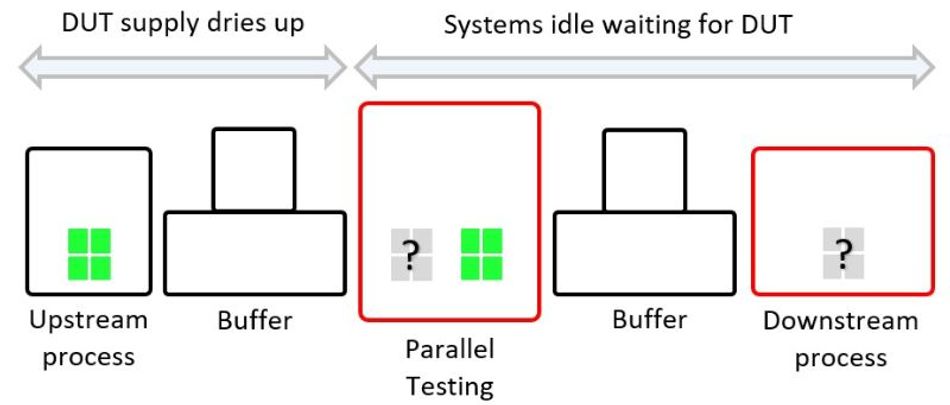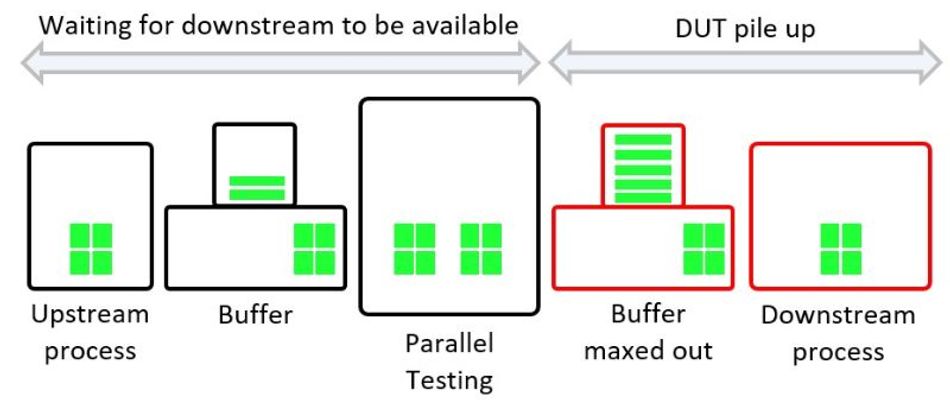Is parallel testing really faster?
One would assume that when we test boards in parallel, this translates to savings in test cycle time, and an increase in production throughput. But is this true?

One would assume that when we test boards in parallel, this translates to savings in test cycle time, and an increase in production throughput. But is this true?
In the process of streamlining production lines to maximize efficiency, test operations come under the spotlight as they occupy significant cycle times as compared to the other assembly stations along the line. The immediate response to this will be to shorten test cycle time by increasing the test station output per cycle. What’s better than testing two or more boards at the same time?
Parallel testing reduces the average test time per board by 50% or more. This translates directly to cycle time savings and throughout improvement. A very attractive solution indeed. However, you need to consider other factors before diving into parallelism test.
Downstream pile up
With the parallel test station churning out twice the output, the sorting station downstream will need to be able to sort the boards at the same rate so that there will not be any pile up. Consider a test station that takes in two boards at a time and tests them in parallel. Upon test cycle completion, this station sends both boards out. This means that the downstream station needs to take twice the time to receive and sort failed boards out of the line for repairs. A typical sorting station handles one board at a time. A handler waits for the sorting of the first board before releasing the next board. The efficiency of the parallel test system depends on how fast the downstream sorter can clear the tested boards.
Now let’s look at the upstream station that is feeding the parallel test system. As the test system is now testing twice as many boards, it will require the upstream station to be able to feed it with a continuous stream of boards in order to upkeep its efficiency.
Cycle time on all the stations in a production line ideally should be equal. This ensures a smooth flow of boards along the line and maintains its high productivity. This is line balancing. A well-balanced line has all its stations operating at about the same cycle time. But test time for different board varies in real life. Some products may have shorter test time than others. Configuring the production line just for a one product is not feasible and limits the versatility of the line.

Production line flexibility
Production lines assembling automotive boards is setup with an in-circuit test (ICT) system along with a programming station to write firmware or boot codes to the devices onboard. Line balancing becomes crucial in this case because of the difference in test time between the ICT and Programing station.
On an automotive main engine control unit (ECU) production line, ICT test time can be longer, just like the programming time needed. This is because of the board’s higher complexity, and more test steps needed. On the other hand, a board designed for advanced driver assistance system (ADAS) applications may take only a fraction of the time to complete ICT test, as it may present simpler circuitry in spite of sporting a more powerful and faster microprocessor. Processing the boards in parallel can balance cycle time between stations.
It is important to have a test system that provides multiple test engines to test boards in parallel and operates in single or dual board mode to handle different configurations of test fixtures.
Selective Board Staging
The Keysight FlexiCore system is a multi-core system which supports a wide range of configurations. You can configure the independent cores of the FlexiCore system to run in parallel or combine them to create a bigger core to support larger boards testing. With the independent cores, you can selectively combine two or more cores to test large board and leave the remaining cores to support smaller ones. This means that you can be testing heterogenous boards in parallel! The limitless combinations deliver a highly flexible and adaptive system for any production line.
Selective board staging is a unique feature of the FlexiCore handler system which configures the system to operate in single board or dual board handling mode. Software switches the handler between single or dual board mode. There is no need for any hardware conversions. A single command is all it takes to put the handler into the operating mode that you want. Production line changeover time is minimum.
$300,000 in test gear prizes up for grabs.
Accurate test gear accelerates innovation – so don’t miss Keysight University Live from the Lab. Join us for an exclusive sneak peek at the never-before-seen test gear, tips from industry vets, and a chance to win prizes like oscilloscopes, RF, and bench equipment. Gear up now…
